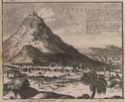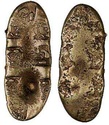Flynn (1991) Silver, Japan and Spain 17c
Printed From: History Community ~ All Empires
Category: Scholarly Pursuits
Forum Name: The Academy
Forum Discription: Discussions about how to write history and conduct research
URL: http://www.allempires.com/forum/forum_posts.asp?TID=24023
Printed Date: 27-Apr-2024 at 14:25
Software Version: Web Wiz Forums 9.56a - http://www.webwizforums.com
Topic: Flynn (1991) Silver, Japan and Spain 17c
Posted By: Maharbbal
Subject: Flynn (1991) Silver, Japan and Spain 17c
Date Posted: 03-Apr-2008 at 21:11
http://www1.pacific.edu/cop/economics/DOF.htm - Flynn Dennis O. (1991) “Comparing the Tokagawa Shogunate with Hapsburg Spain: Two silver-based empires in a global setting”, in Tracy James D. ed., The Political Economy of Merchant Empires. State power and world trade 1350-1750, New York: Cambridge University Press, 332-359.
http://books.google.pt/books?id=1jHpt9hdreoC&pg=PA311&lpg=PA311&dq=Giovanni+Battista+Rovellasca&source=web&ots=qPV-QFE2tX&sig=NjwUXXrag1gYYWzKgl913q9VhF0&hl=pt-PT#PPA398,M1 - This book is available on google for every one to read!!! Estimations find Spanish American empire’s silver production at 300 metric tons per year during the 16th and early 17th century and Japan’s – the second largest world producer – at 200 (332). Over the period, 15,000 tons went from America to Europe and 13,000 directly from Mexico to Philippines (335) Japan exported 10,000 tons (336). Yet, this enormous annual production only represented 1 or 2% of the world’s silver stock at the time. Europeans didn’t keep the silver, Spain used copper and European trade relied on bills of exchange. Instead European were middlemen bringing American and Japanese metal to China and (to a lesser extent) India. China’s silver thirst was due to the collapse of the paper-money system in 1436.
Silver although was quiet particular in that it was not consumed (it accumulated for centuries) hence the supply can only increase (on a graph the supply curve would be vertical). Consequently, the value of silver constantly decreased over time; it lost 50 to 65% during the early modern period (339). Problem On the contrary of what was previously assumed, the 17th-century silver production was greater than 16th-century. According to Flynn, the 17th century crisis was not due to a lack of supply but to a drop of silver’s value. Flynn doesn’t see the early modern globalization as the creation of a world market but as the progressive overlapping of numerous localized submarkets (W. Europe, E. Europe, Russia, Middle East, China…). This gradual integration happened between China and Japan, by 1640s the value of gold to silver in one had become virtually identical to that in the other. By 1630s, the http://www.econmodel.com/classic/terms/arbitrageprofit.htm - arbitrage profit coming from the favourable exchange rate between gold and silver had disappeared but not the flow of European silver to China. Why? Because arbitrage profits still existed between silver and other commodities. Besides, arbitrage profit is not the only benefit one gets from trade, accessing new market to widen the demand side is essential (economies of scale and so on). Arbitrage profits were possible because the world market prices were based on former (15th century) production price. American silver was much cheaper to produce, thus the margin was enormous. It took about a century (till the 1630s) for the market to re-attain a equilibrium price in relation with the production costs. Spain waged military ventures with the benefice of the American silver, while shoguns and damyos invested in infrastructures (in 1550-1650 Japan doubled its amount of rice paddy). Critically, the Tokugawa bafuku was in charge of all the silver mines of the archipelago, it explains its domestic supremacy and its ability to pull Japan out of the Chinese tributary world order. Why did Spain decline while Japan didn’t? Spain only had silver, Japan had gold and copper. Spanish silver was cheaper to produce because of the easier access to mercury (necessary to proceed silver) and to the fact that production was not monopolized by the political power but left to the private sector. Spain and Japan were competitors on the Asian market. But what if Japan hadn’t produced silver? Silver price would have decline much been delayed (50 years latter maybe) and Spain could have win the war against Holland and England and modern capitalism may have never appeared. Consequences In Japan and not in Spain, the economic development allowed by silver undermined the power of the warrior class and accelerated the strengthening of capitalism. Discussion The author defends the von Hayek’s monetary theories and is inspired by libertarian ideology. It is quite refreshing considering that most historians are more or less Marxist. That said, his view on money as a mere commodity is simplistic as silver makes trading easier and thus participate more than any other commodity to economic growth, it hardly stays still, silver is a prime multiplier. Besides, his bet that 20th century Spanish economic setbacks compared to Japanese success are partly related with the 16th century fiscal pressure is very awkward. ------------- I am a free donkey! |


